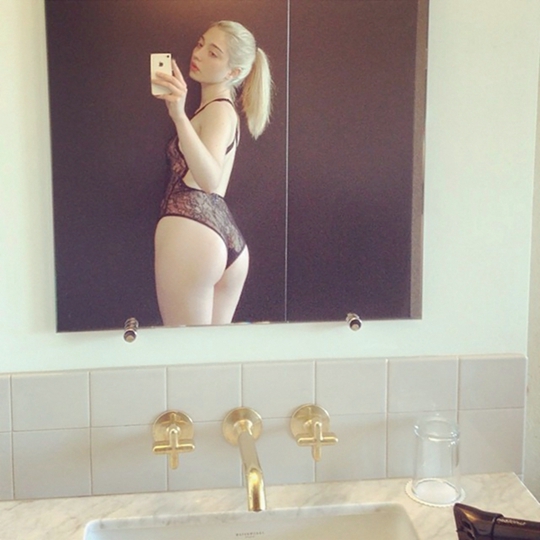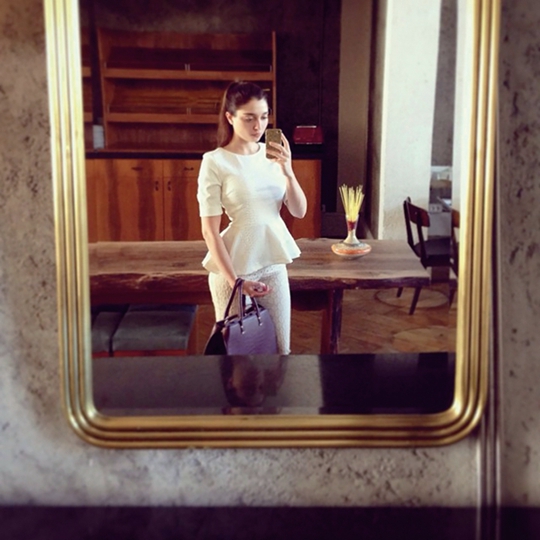BODY MODIFICATION
| June 25, 2015 | Post In 2015年6月号

Plastic surgeon Dr. Fredric Brandt passed away in his Miami apartment in April. Known as the Father of Collagen, Brandt revolutionized the very concept of cosmetic surgery. Previously, the fountain of youth was approached through physical reduction, represented by facelifts—the adjustment of the periosteum and the superficial musclo-aponeurotic system, as if stretching a painting over its frame, in order to remove “excess” facial tissue elongated by father time. Brandt’s method, on the other hand, is one of addition: he reconstructed his clients’ youth by filling the loose areas in with materials like hyaluronic acid.

Argentinian artist Amalia Ulman produced the piece “Excellences and Perfections” (2014) after speaking with Dr. Brandt in New York, looking at cosmetic surgery and concepts approximating its effects. Ulman researches celebrities’ posts on social networks and analyzes the tone of their language, framing of their photographs, hashtag keywords, uploading frequency, and uploading timestamps, and creates a script for the perfect internet goddess. Using her own body and image, Ulman reenacts a certain lifestyle over social networks: high end hotel rooms, perfectly placed dinner settings, expensive lingerie, yoga sessions, exclusive fragrances, breast augmentation surgery. These scenarios rapidly boosted her Instagram follower count. Whether she has actually had cosmetic surgery is unverified; the breast augmentation surgery is false, but it is a fact that she has become increasingly gorgeous.

Anthropologist Michael Taussig compares Colombia’s practices of bodily mutilation and torture to the beauty industry in his book Beauty and the Beast. The extremes to which humans are willing to go to achieve beauty have long been part of popular psychology. Beauty is a cultural order established on the body, with footbinding a prime example of such. These measures of beauty are not only man-made; they act as a marker of social mobility. Makeovers in art include Orlan’s The Reincarnation of Saint-Orlan, in which the artist assembles Mona Lisa’s forehead, Venus’s chin, and other features from historical masterpieces on one face. Pei Li’s tattoo piece Project P links personal memory with everlasting marks on the skin; her Artist Must Be Beautiful (apparently an adaptation of Marina Abramovic’s 1975 piece Art Must Be Beautiful; Artist Must Be Beautiful) records her cosmetic surgeries in detail. Ulman’s work does not criticize the concept of beauty from the ontological distance between the superficial and the soul; instead, it focuses on the self-branding of modern society. Ulman’s photos on social networking platforms are of a tender and likable tonality, reminiscent of a classical French manicure: cream and powdered coral are symbols of beauty with which an average person can identify, not too far-fetched in their own versions of reality. By posting them, she provides us with a view of middlebrow culture, and a means to understand the dissemination of the concept of beauty as well as its symbolic efficiency.
Text by Venus Lau
Translated by Frank Qian

